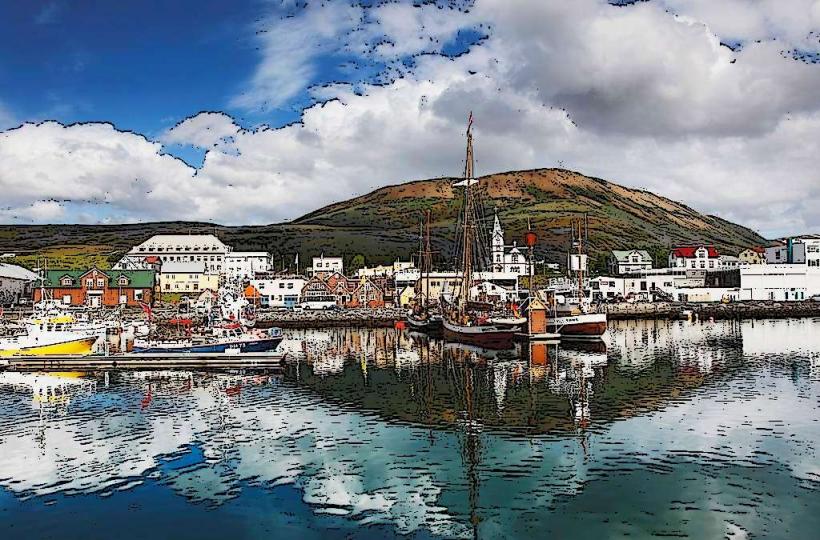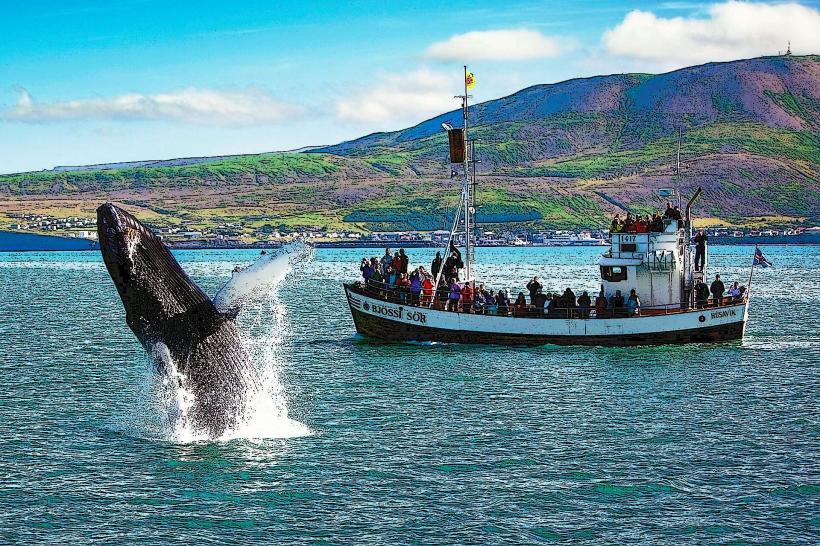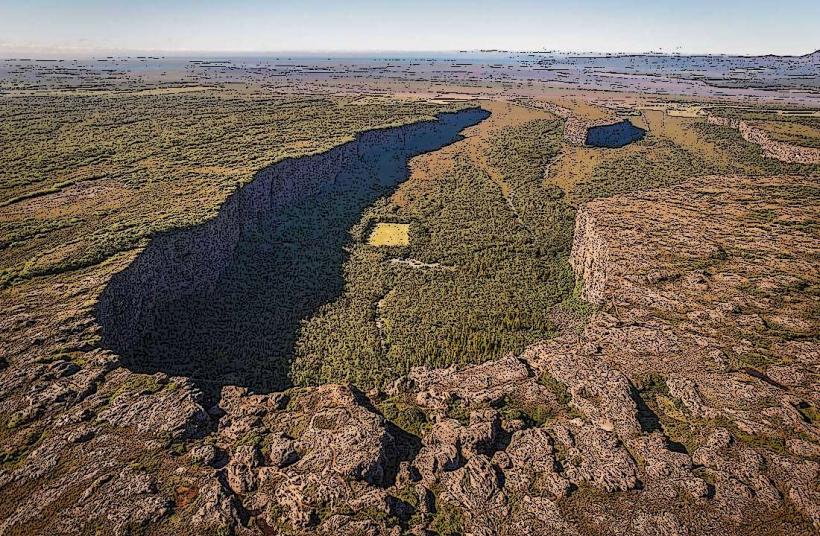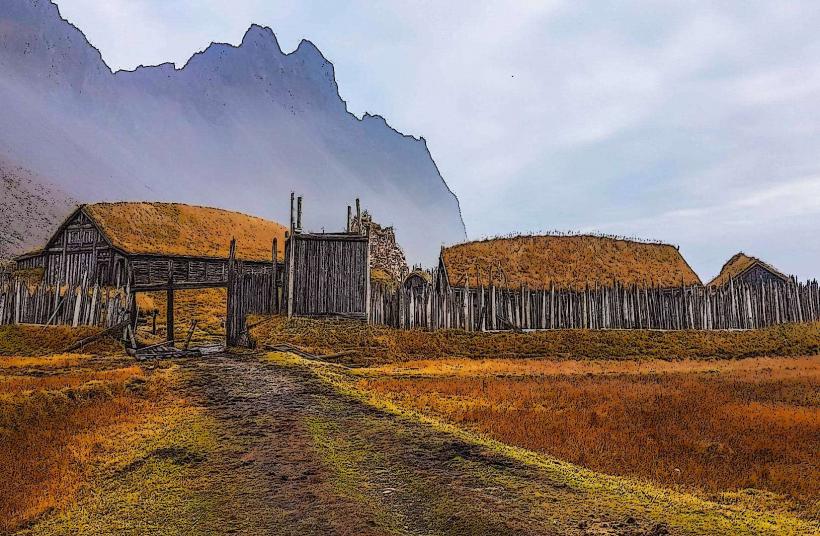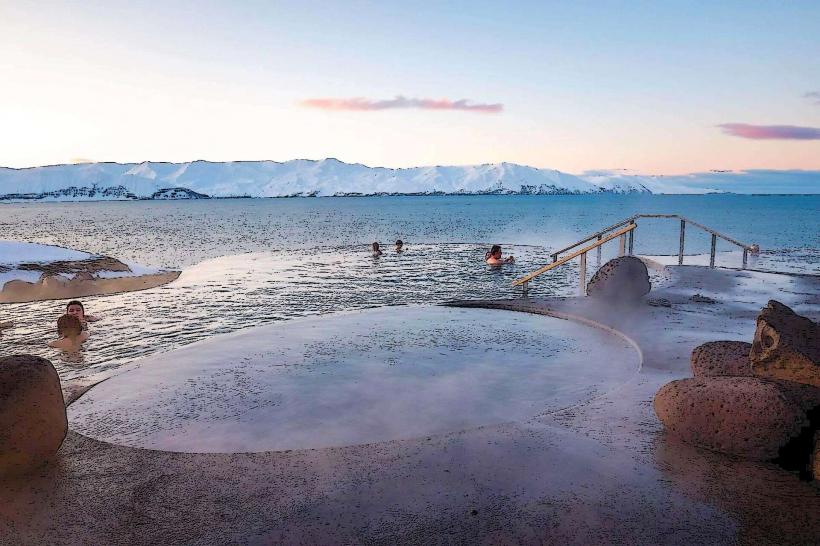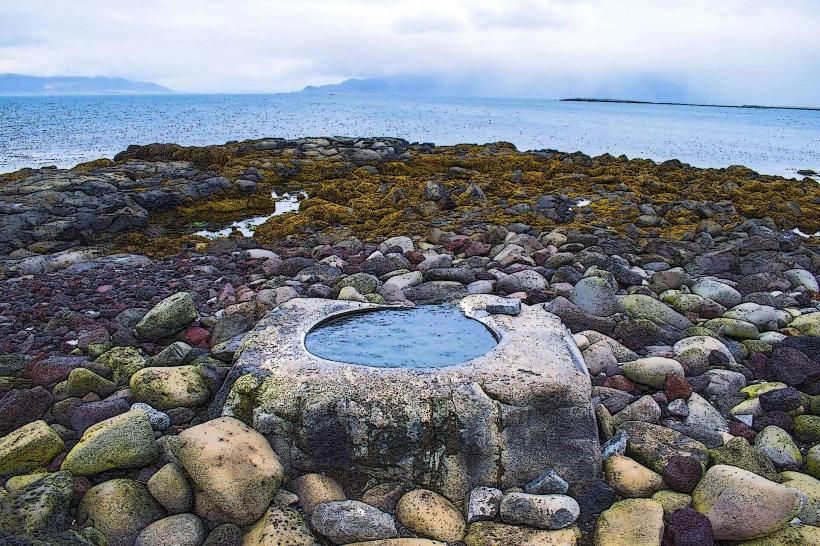Information
Landmark: Skjálfandi BayCity: Husavik
Country: Iceland
Continent: Europe
Skjálfandi Bay, located in northern Iceland near the town of Húsavík, is a stunning natural area renowned for its breathtaking landscapes, rich biodiversity, and excellent whale-watching opportunities. The name "Skjálfandi" translates to "Shaking Bay," likely referring to the region's frequent seismic activity due to its location near tectonic plate boundaries.
1. Overview of Skjálfandi Bay
Geography:
Skjálfandi Bay is situated between the Tjörnes Peninsula to the east and the Flateyjarskagi Peninsula to the west. The bay extends about 15 kilometers in width and 25 kilometers in length. The surrounding areas feature rugged coastlines, volcanic formations, and lush green hills, making it a picturesque location.
Tectonic Activity:
The bay is near the Mid-Atlantic Ridge, where the Eurasian and North American tectonic plates diverge. This geological activity has shaped the region's dramatic landscape over millennia.
2. Marine Life and Biodiversity
Skjálfandi Bay is one of the richest marine ecosystems in Iceland, making it a hotspot for wildlife enthusiasts and researchers.
Whales:
The bay is one of the top destinations for whale watching in the world, with a variety of species frequently spotted, including:
- Humpback whales (known for their acrobatic breaching and tail-slapping).
- Blue whales (the largest animals on Earth).
- Minke whales.
- Fin whales.
- Orcas (killer whales).
- Pilot whales.
Dolphins and Porpoises:
Common sightings include white-beaked dolphins and harbor porpoises, often playful around boats.
Birdlife:
The bay is also a haven for seabirds such as:
- Puffins (found on nearby cliffs and islands during the summer).
- Arctic terns.
- Guillemots and fulmars.
Fish and Other Marine Life:
The bay supports a diverse range of fish species and plankton, which serve as a food source for larger marine animals.
3. Whale Watching in Skjálfandi Bay
Húsavík is often referred to as the "Whale Watching Capital of Europe," with most tours departing from its harbor. Whale watching is a cornerstone activity in Skjálfandi Bay.
Tour Operators:
Several companies operate from Húsavík, offering guided tours aboard traditional Icelandic oak boats or modern vessels. Some also offer silent electric-powered boats for an eco-friendly experience.
Best Time for Whale Watching:
The prime whale-watching season runs from April to October, with summer months (June to August) being the best for both weather and whale activity.
Unique Experiences:
Some tours offer specialized experiences, such as:
- Midnight sun whale watching during the endless summer days.
- Combination tours that include birdwatching or fishing.
4. Geological and Cultural Significance
Volcanic Activity:
The bay lies within a geologically active zone, shaped by volcanic eruptions and earthquakes over time. The nearby Krafla volcanic system and Lake Mývatn area add to the region’s volcanic heritage.
Folklore:
Icelandic folklore ties Skjálfandi Bay to mystical sea creatures and legends, adding an enchanting cultural layer to its natural beauty.
5. Nearby Attractions
Skjálfandi Bay is surrounded by numerous attractions that enhance its appeal as a tourist destination:
Húsavík Town:
A charming fishing village and the hub for whale-watching tours. The town also features the Húsavík Whale Museum and Húsavík Church.
Flatey Island:
A small island in the bay, home to seabirds and offering a tranquil escape for visitors.
Tjörnes Peninsula:
Known for its fossil-rich cliffs, offering unique geological insights and breathtaking views of the bay.
Ásbyrgi Canyon and Jökulsárgljúfur:
Both are part of Vatnajökull National Park and easily accessible from the bay, providing hiking opportunities and dramatic scenery.
6. Activities in and Around Skjálfandi Bay
Boat Tours:
Apart from whale watching, scenic boat tours allow visitors to explore the bay’s natural beauty, including its coves, cliffs, and wildlife.
Kayaking:
For an intimate and adventurous experience, kayaking in the bay offers a chance to get closer to nature.
Fishing:
Traditional and recreational fishing is popular in Skjálfandi Bay, with options to catch cod, haddock, and other local fish species.
7. Environmental Protection
Skjálfandi Bay's ecosystem is well-preserved thanks to Iceland's stringent environmental laws. Eco-tourism practices are heavily promoted, ensuring minimal impact on the bay’s fragile marine environment. Efforts include:
- Regulating whale-watching tours to prevent disturbances to the animals.
- Promoting sustainable fishing practices.
- Protecting key bird-nesting sites.
8. Best Time to Visit
- Summer (June to August):
Offers long daylight hours, optimal whale activity, and pleasant weather. - Spring (April to May):
Ideal for early birdwatching and spotting migrating whales. - Autumn (September to October):
Features fewer crowds and an opportunity to witness the Northern Lights over the bay.
9. Conclusion
Skjálfandi Bay is a jewel of Iceland’s natural heritage, offering unmatched opportunities to witness marine life in their natural habitat and explore the raw beauty of the Icelandic coast. Whether you're embarking on a whale-watching tour, kayaking through the tranquil waters, or simply taking in the breathtaking scenery, Skjálfandi Bay provides an unforgettable experience for nature enthusiasts and adventurers alike.


